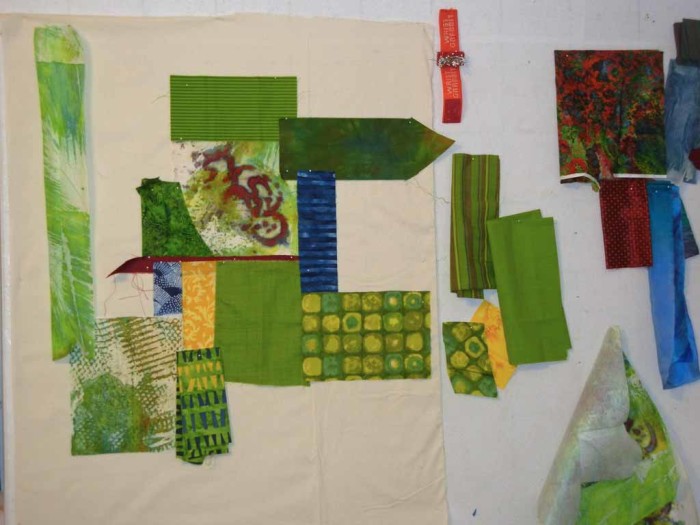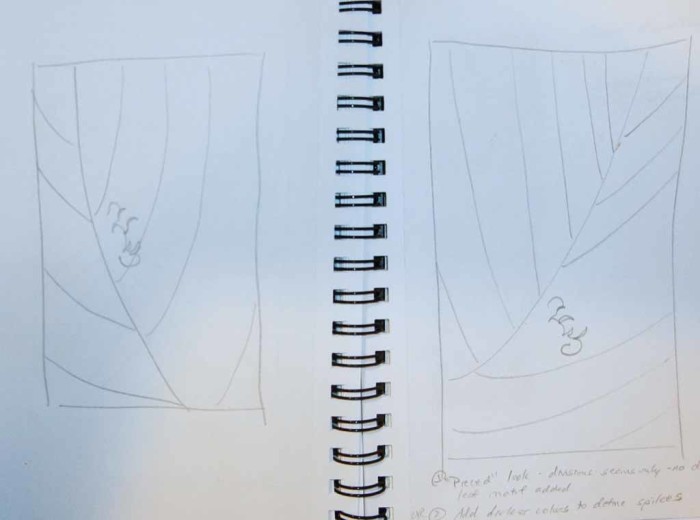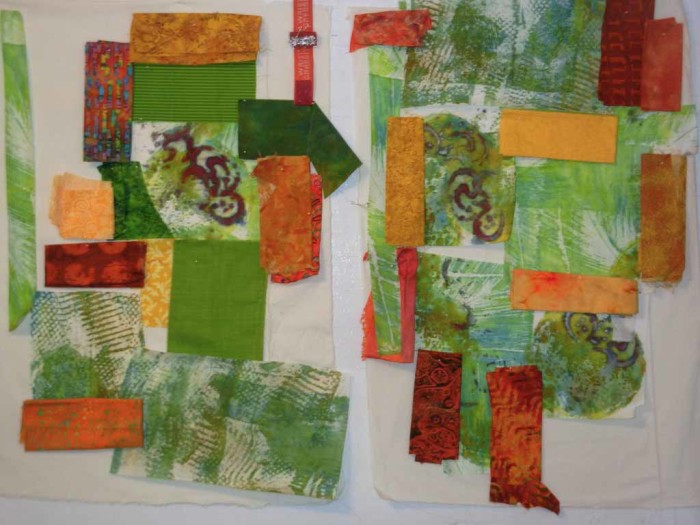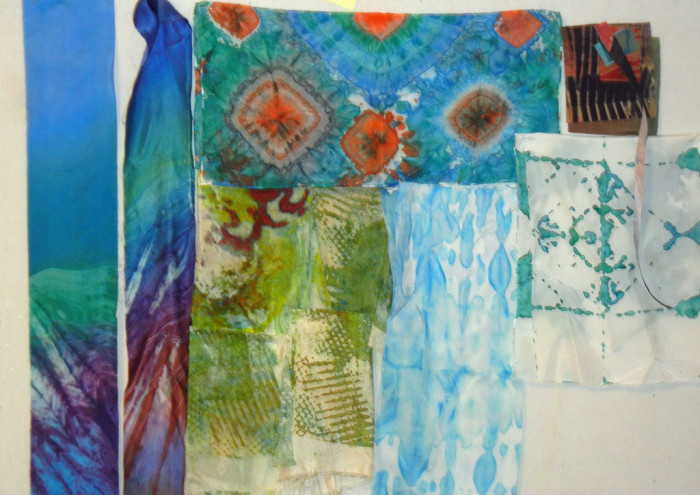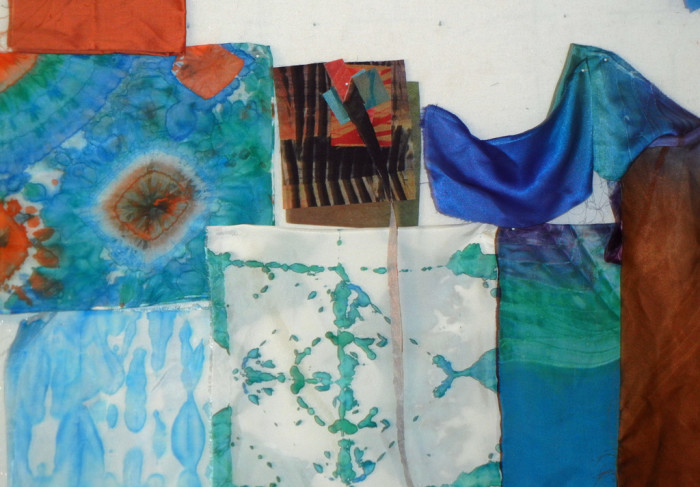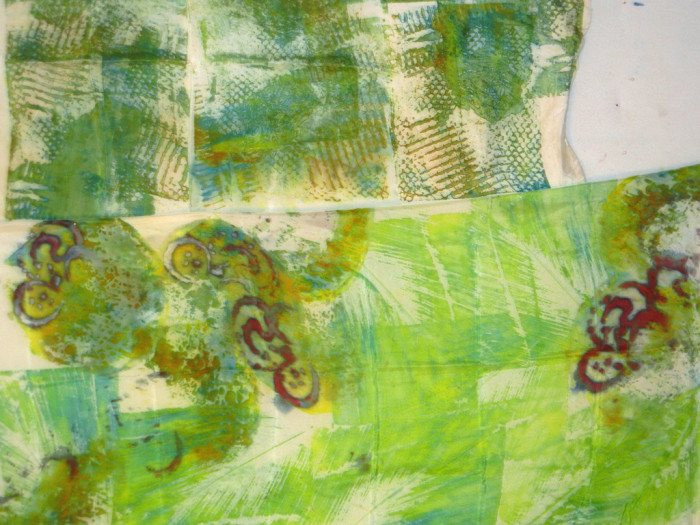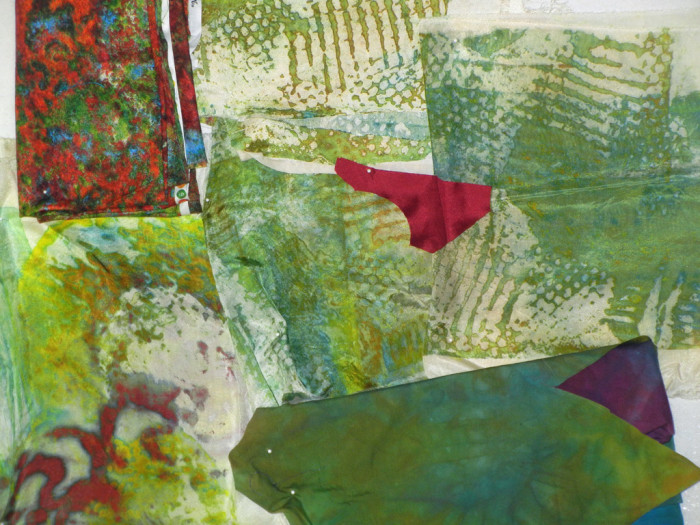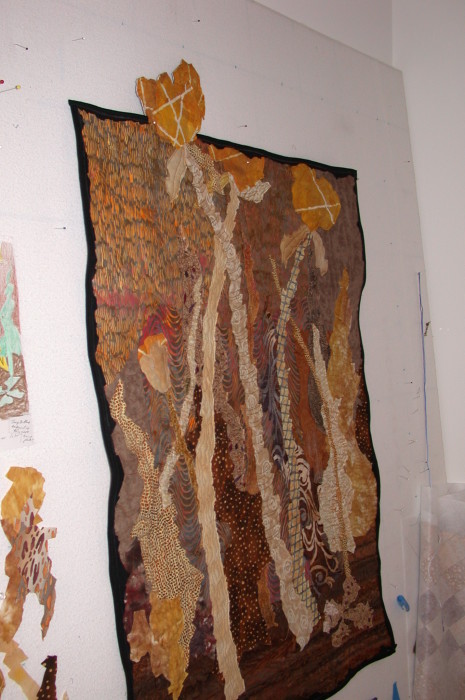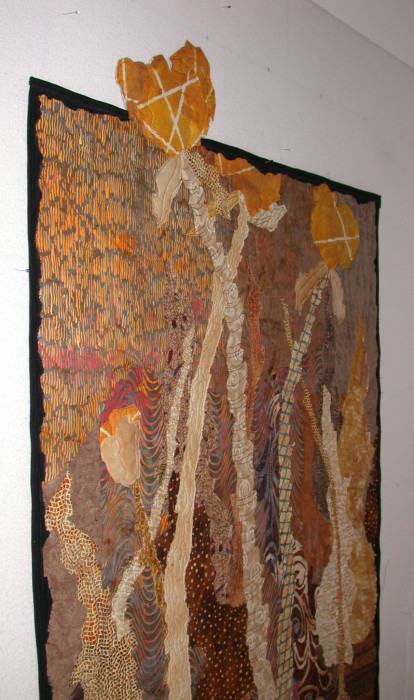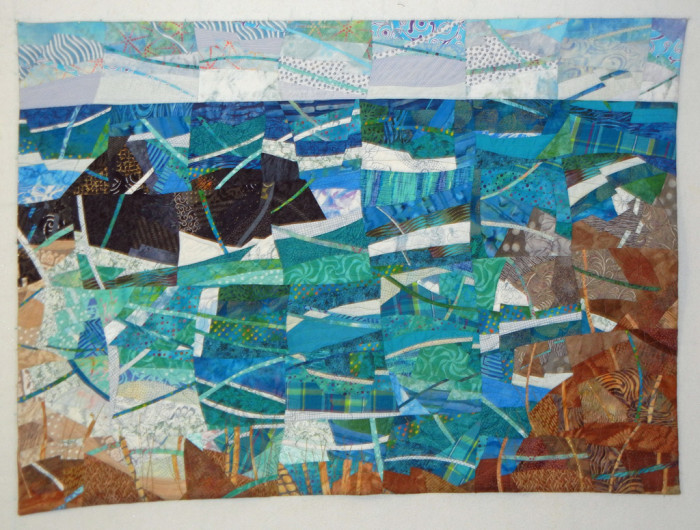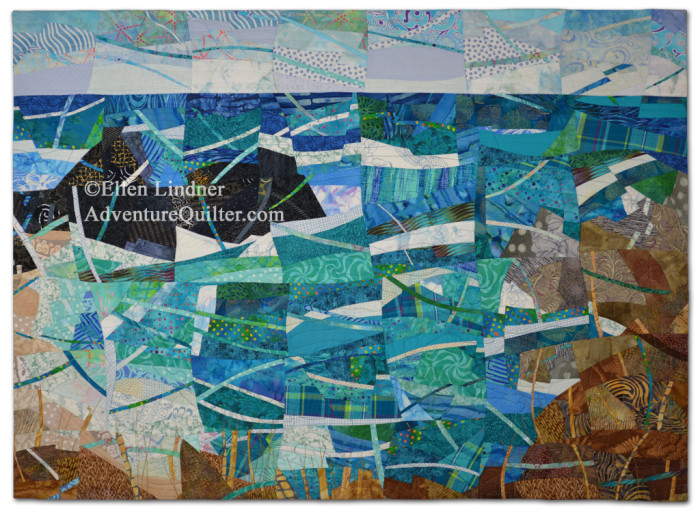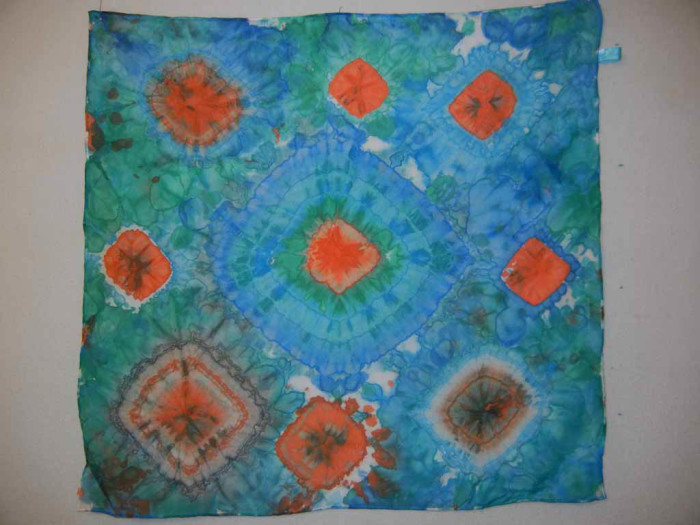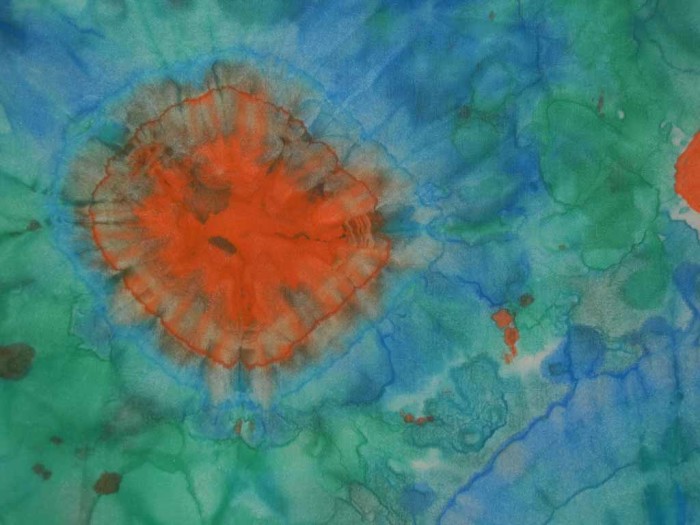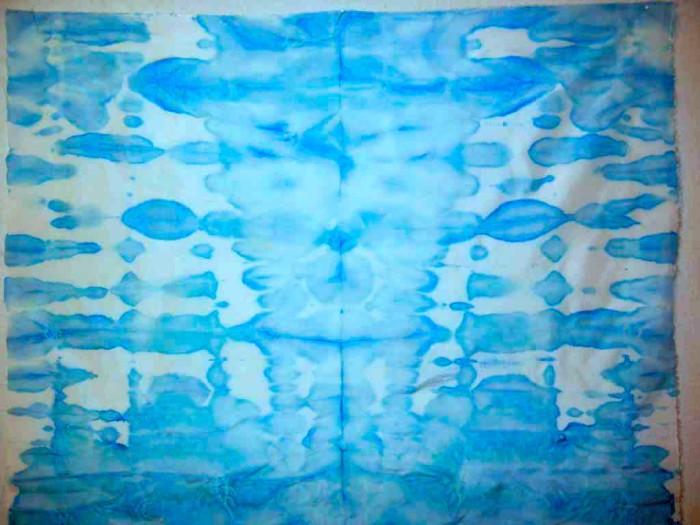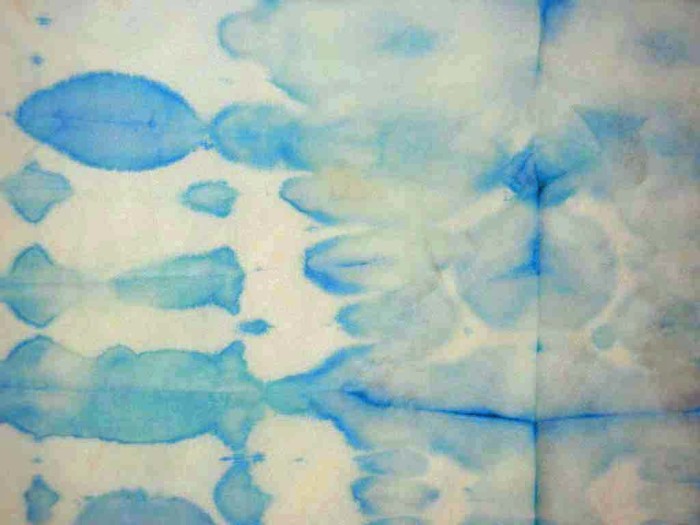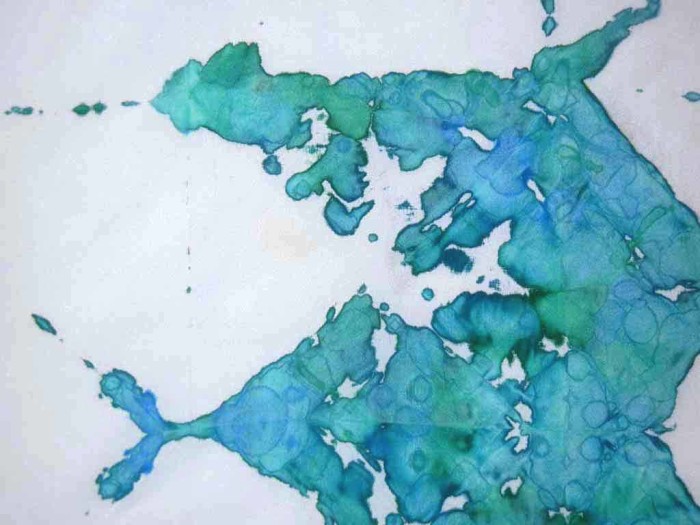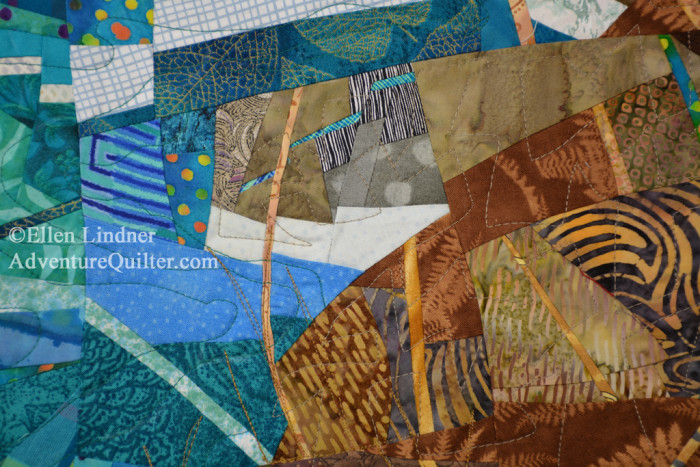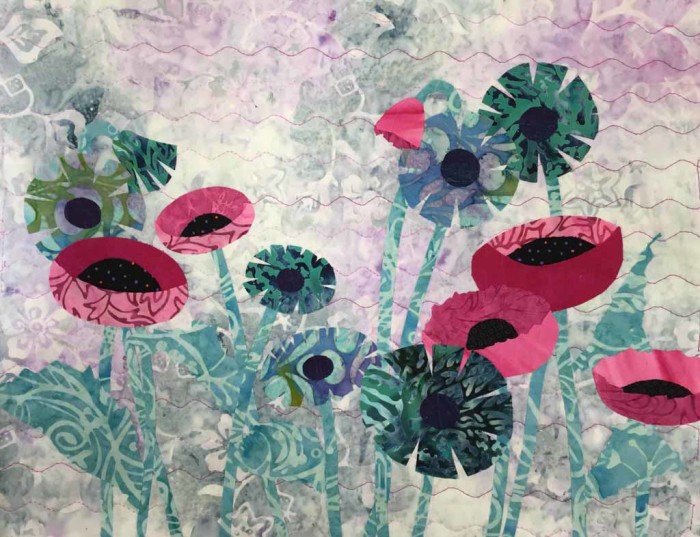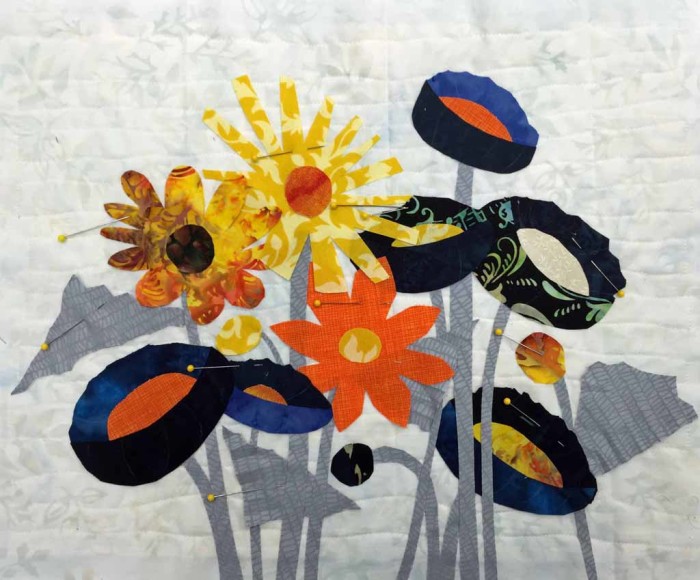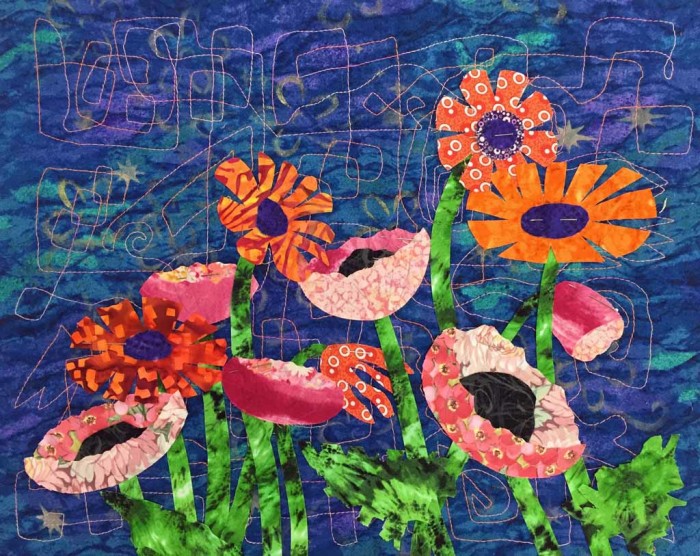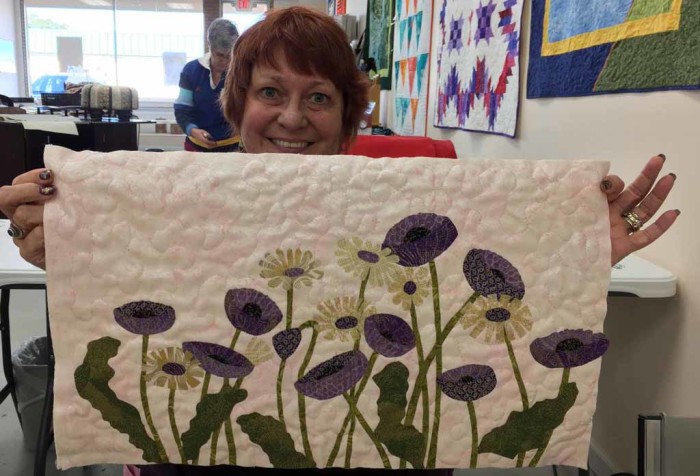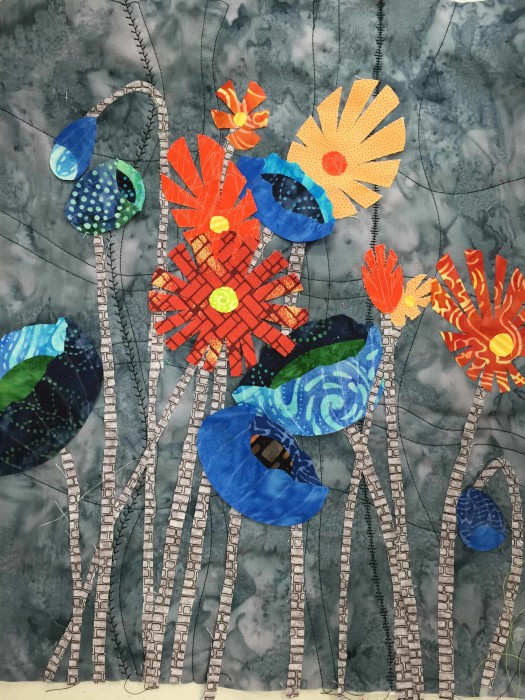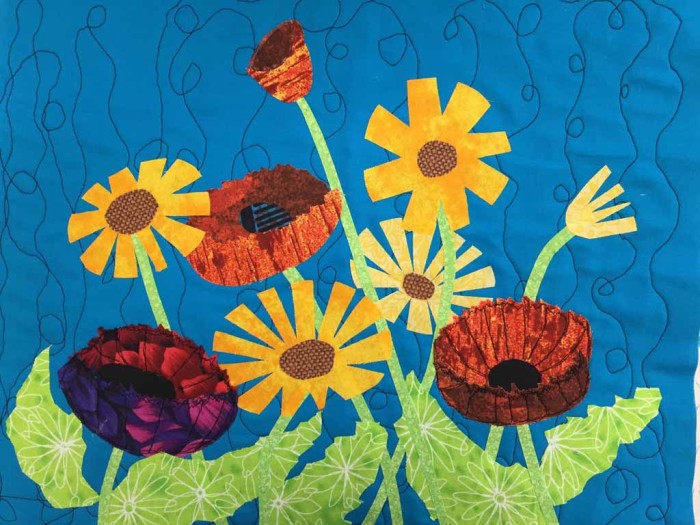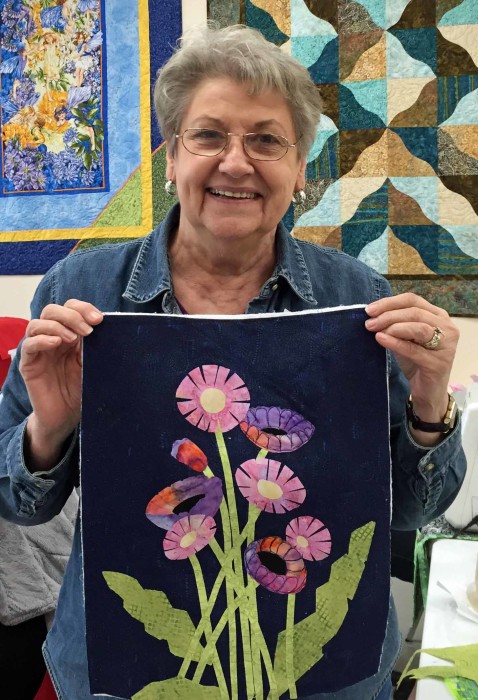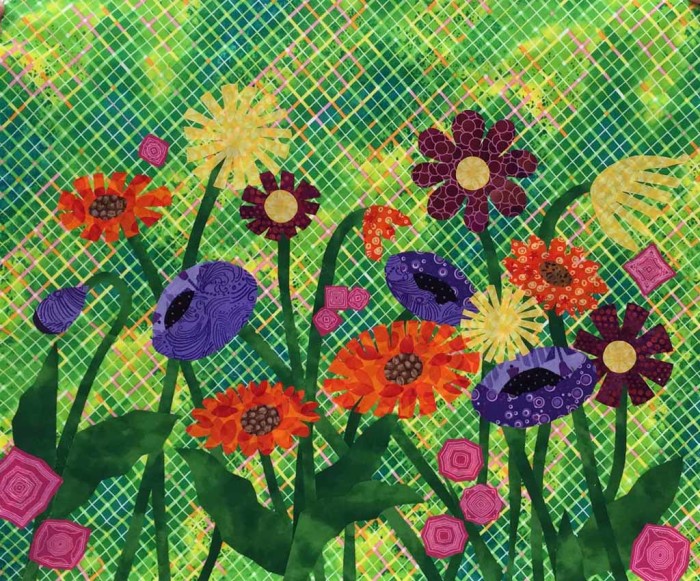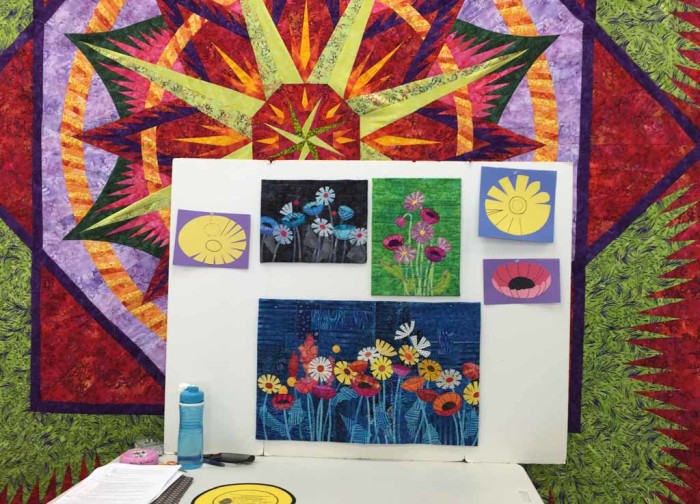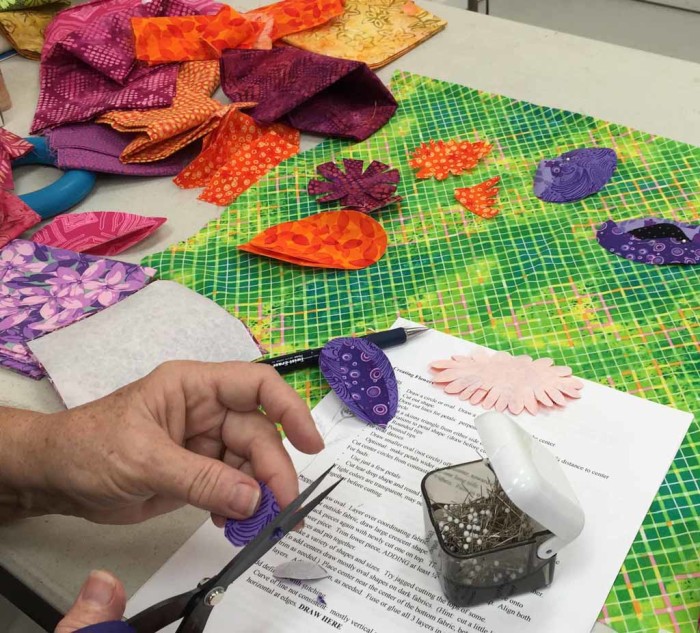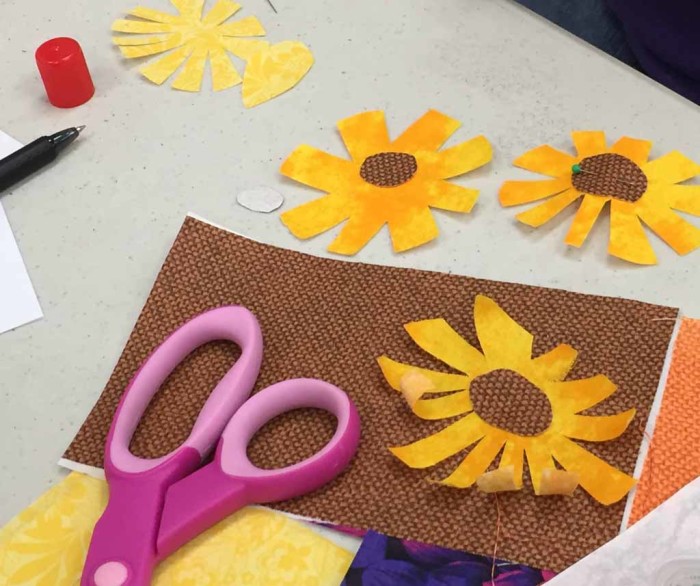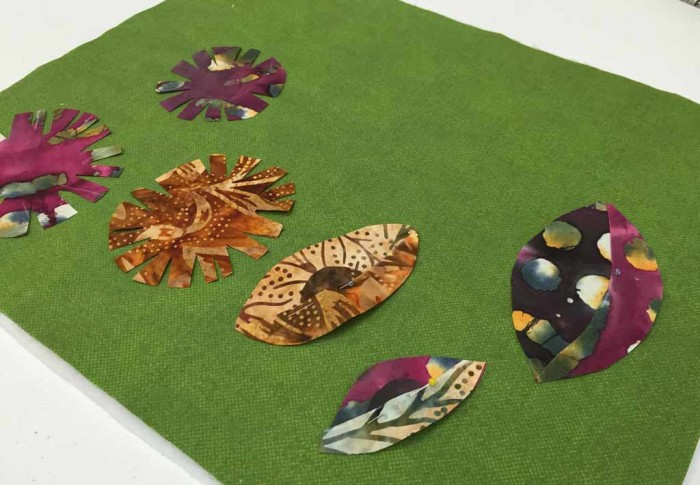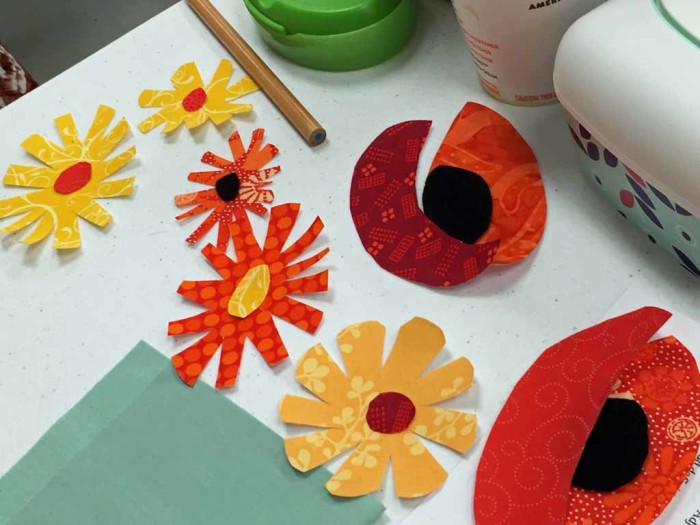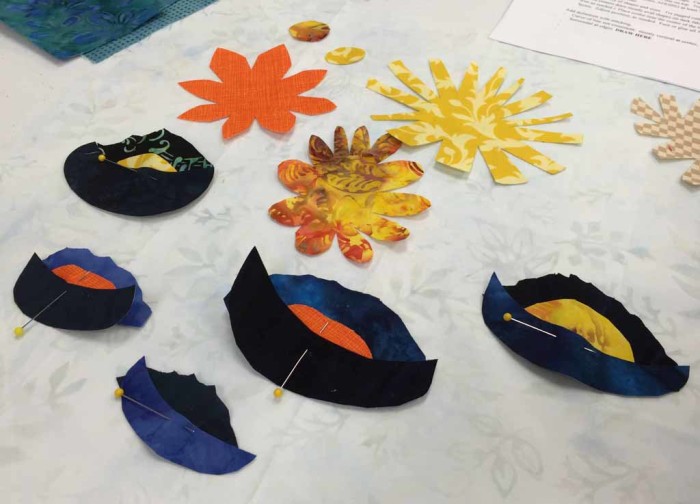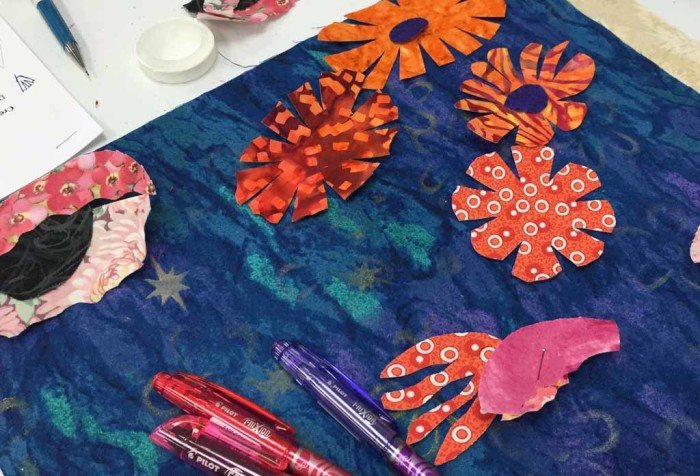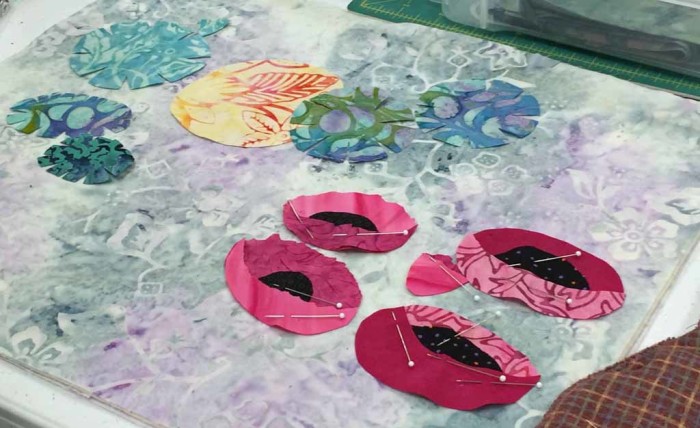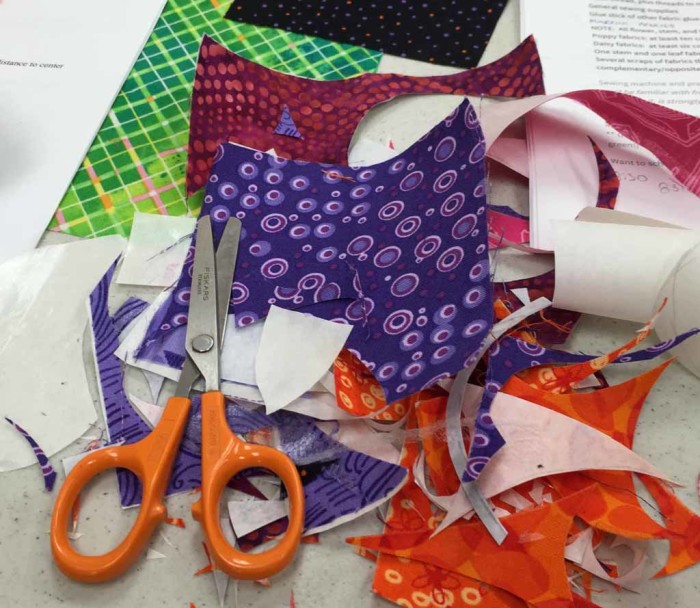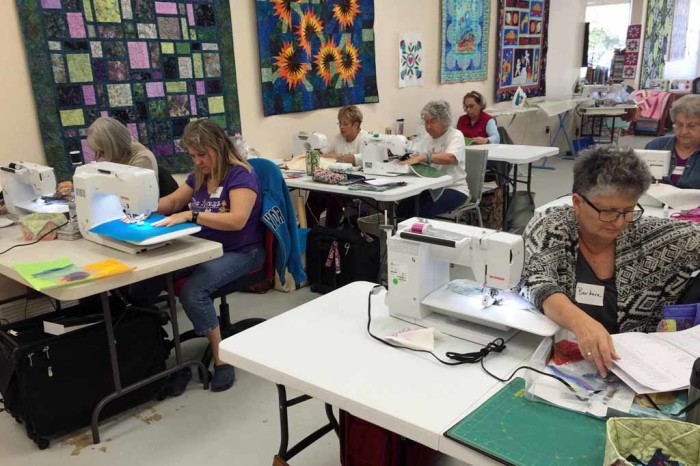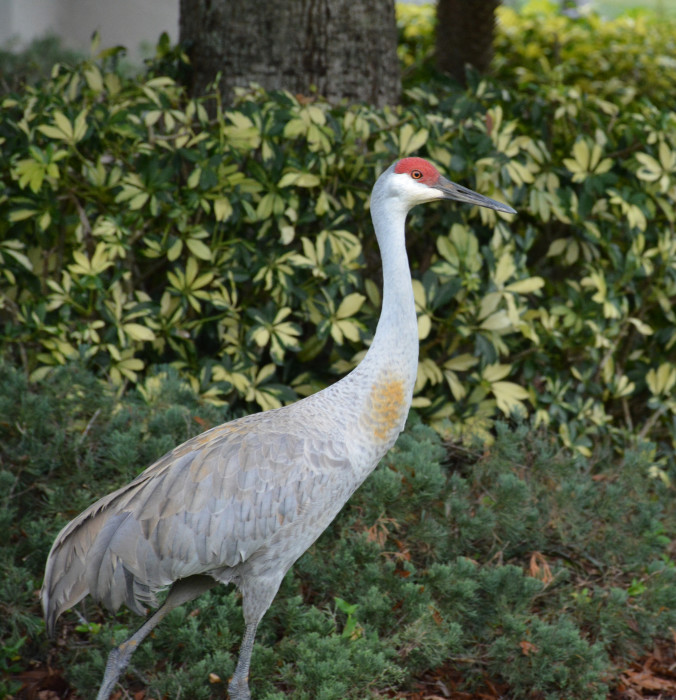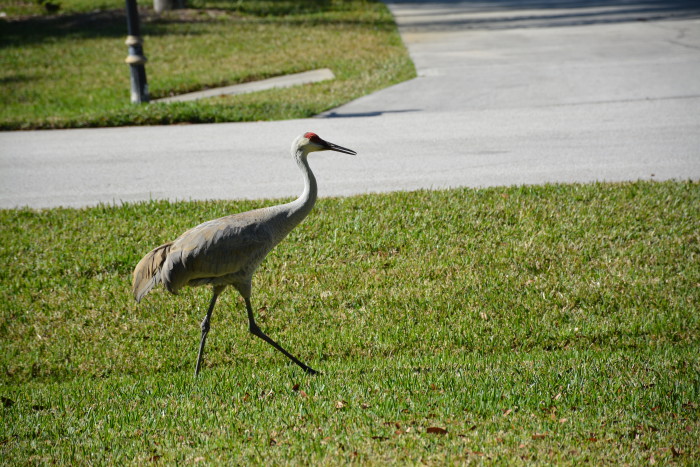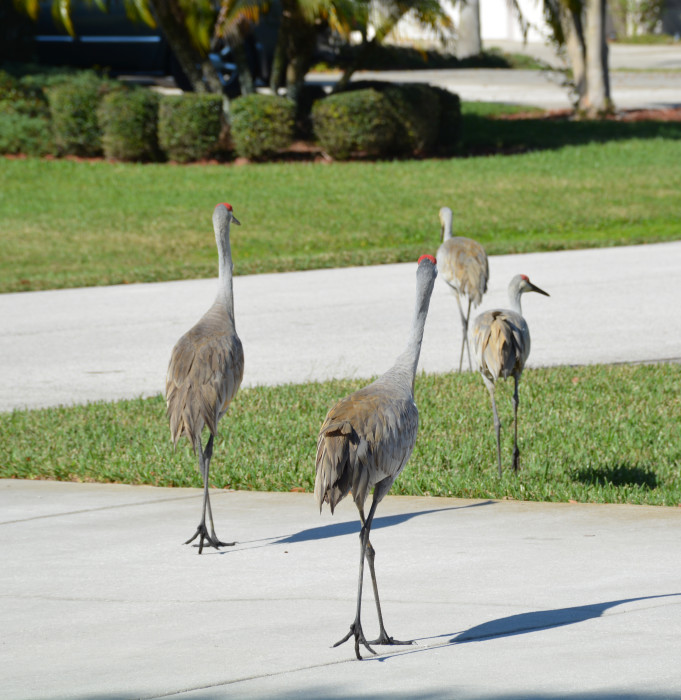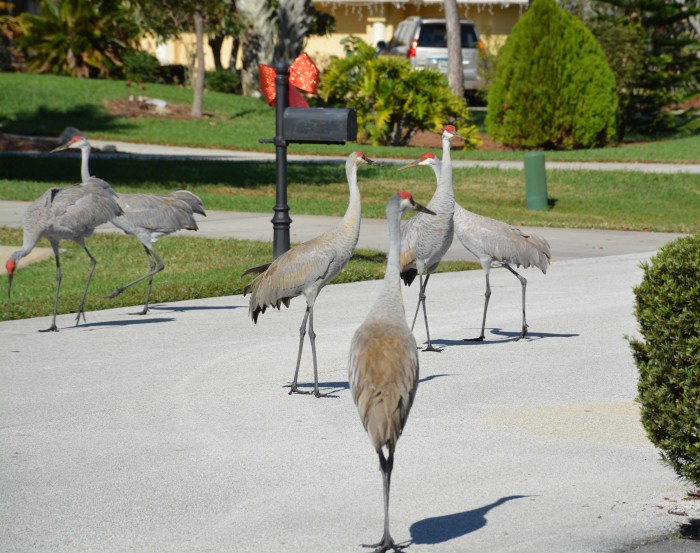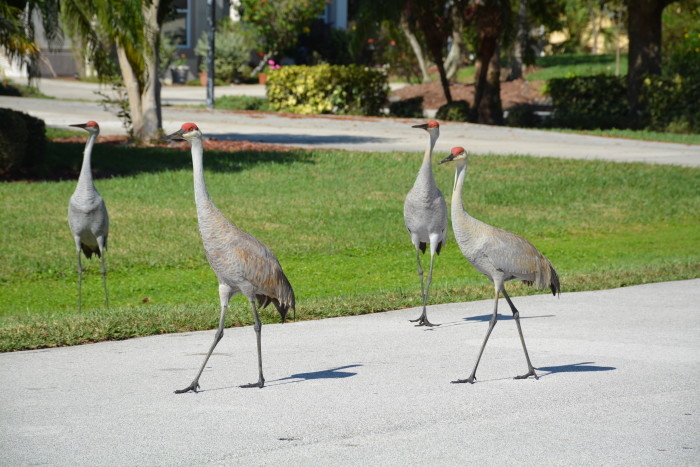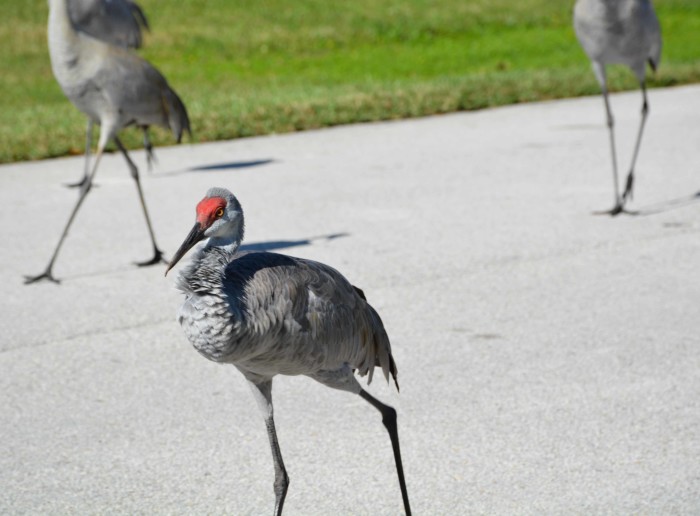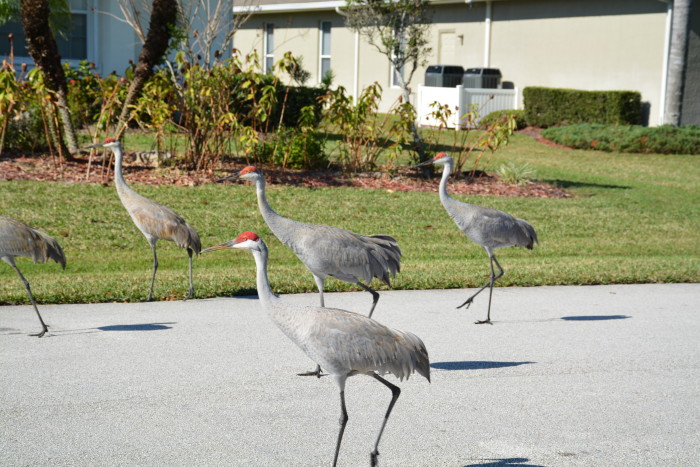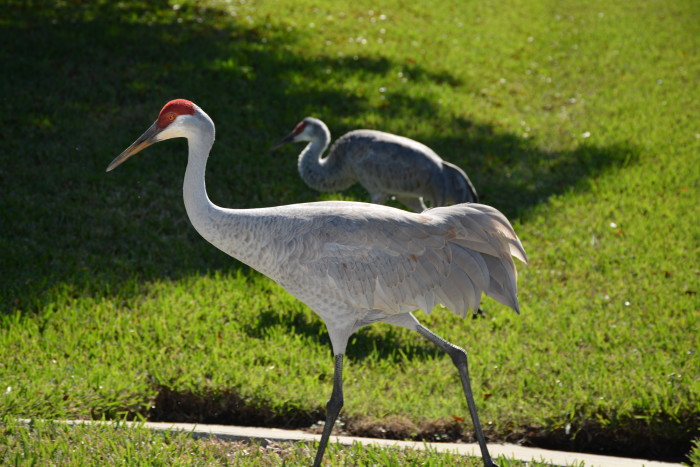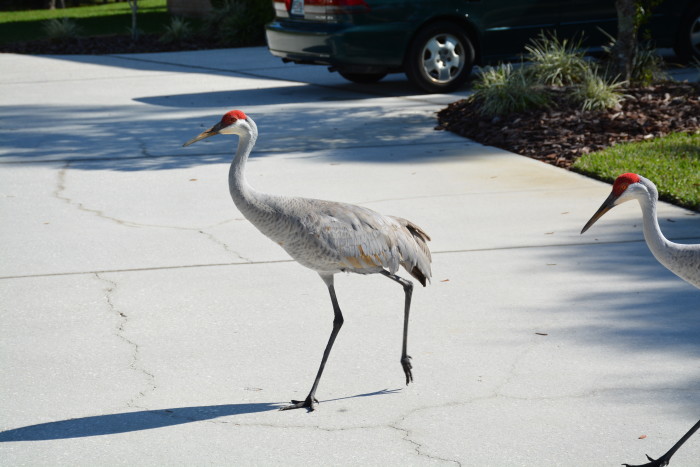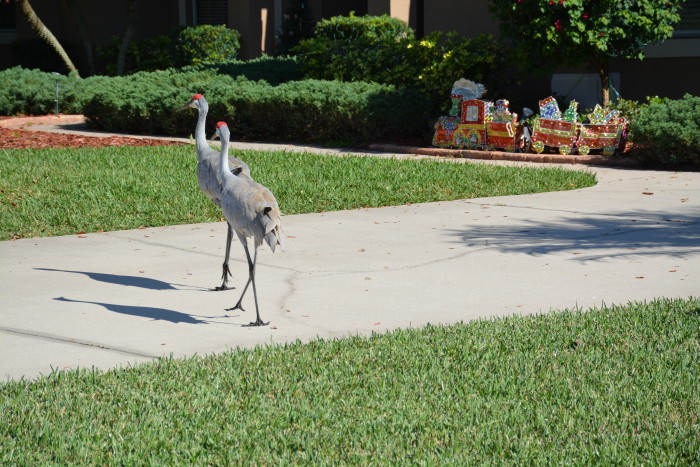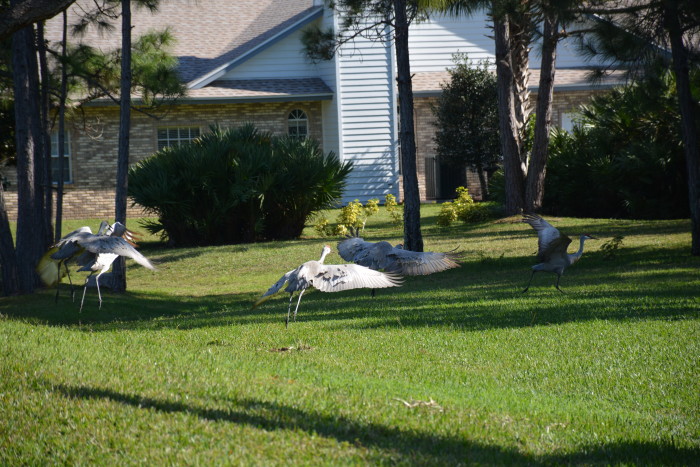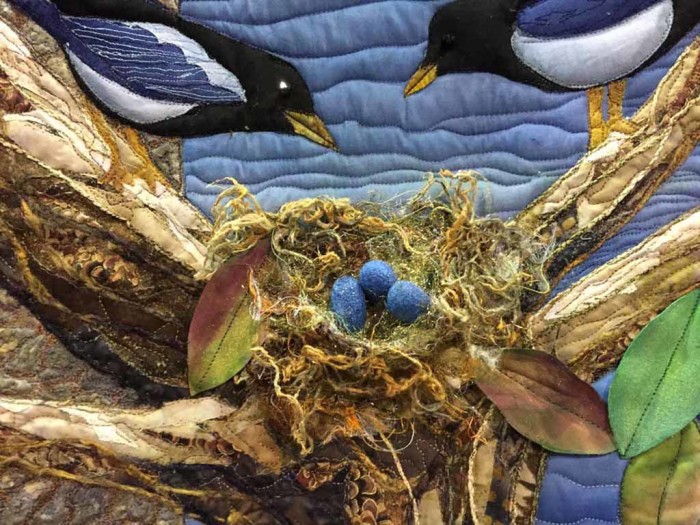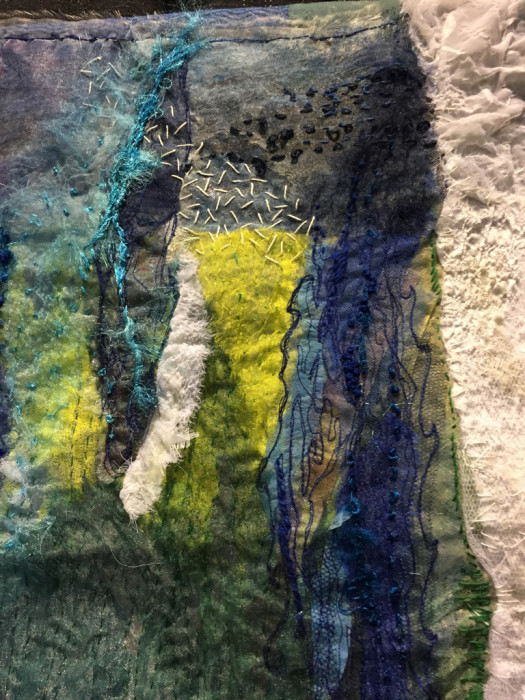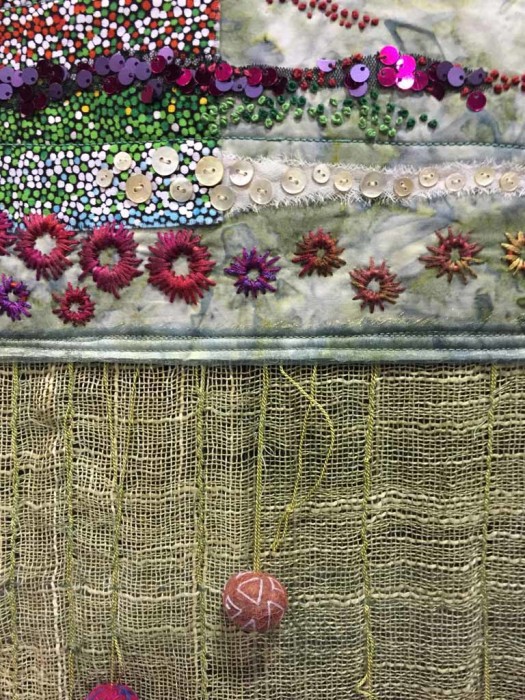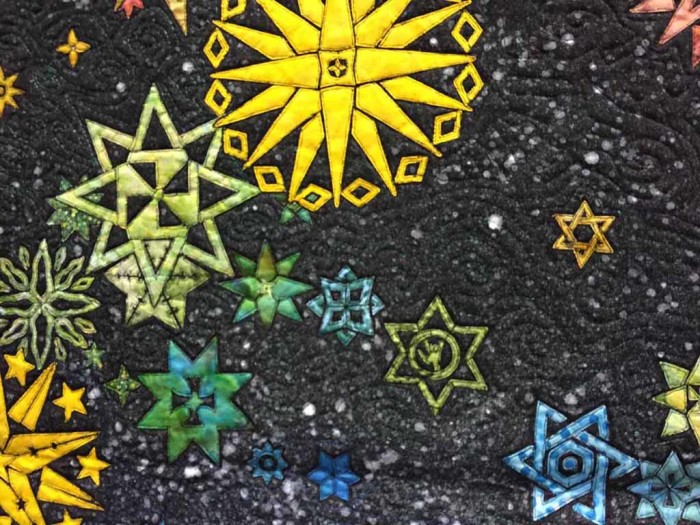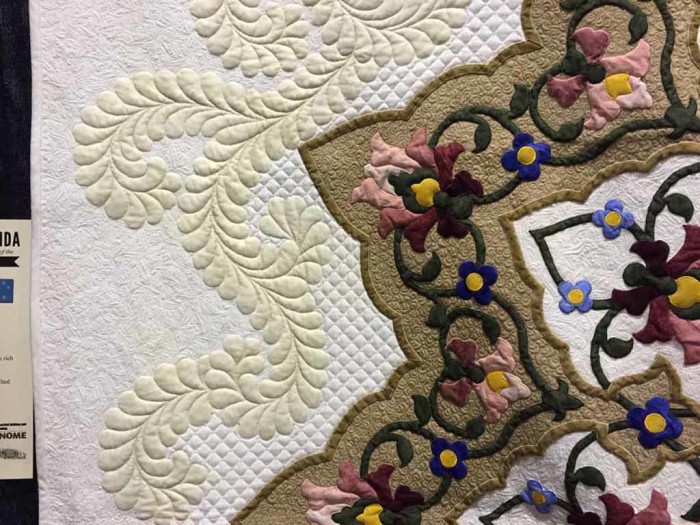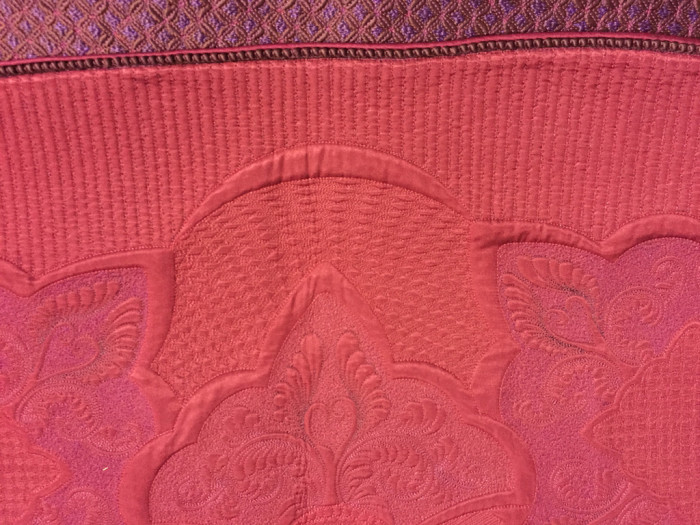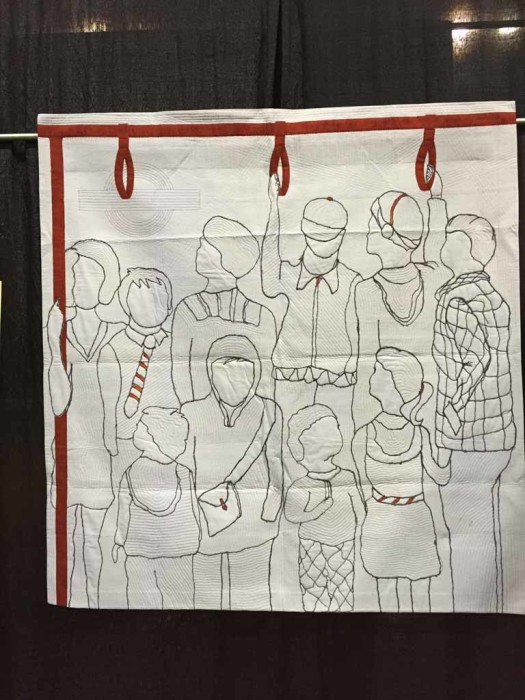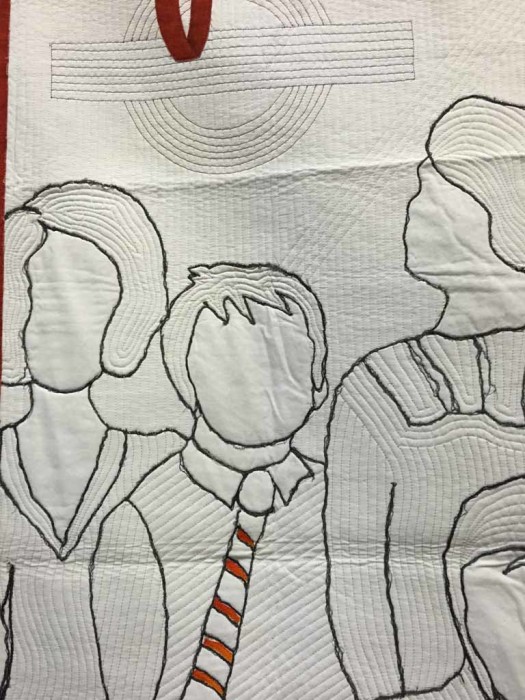You know all the improvisational piecing I’ve been doing lately? It’s all Pat Pauly’s fault. When I saw her demonstrate it on Quilting Arts TV, I jumped in and tried it. Plus, there were several other segments featuring Pat which included a variety of design and creativity exercises. These really intrigued me and I tried a few of them. So, when I learned that Pat would be teaching classes about 3 hours from my home, I decided to hit the road and take a class with her.
The class was called “A Dozen Ways: Designs for Art Quilts.” The idea was to show us ideas for jump starting quilt designs. As you might imagine, the pace was VERY quick in order to cover so much material.
Our first assignment was to cut up a photo and rearrange it. Here’s mine, before and after. (Of course, the after would need to be tweaked to square it up.)
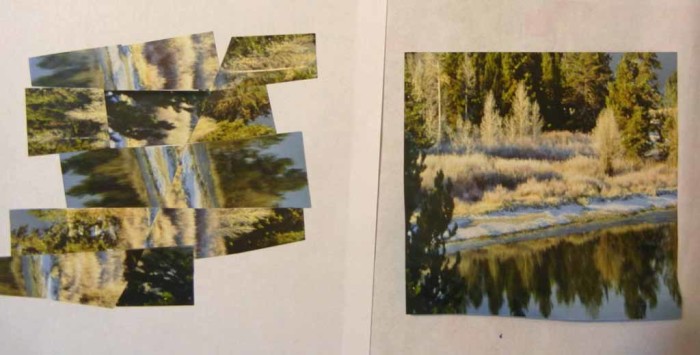
Next, we made a small 1″ square opening in a piece of paper. We used this window to audition different compositions within the pictures we had brought. This was mine. There are definitely some great little compositions in this photo, although I think only one of mine was viable. (Did I mention we were moving very quickly?)
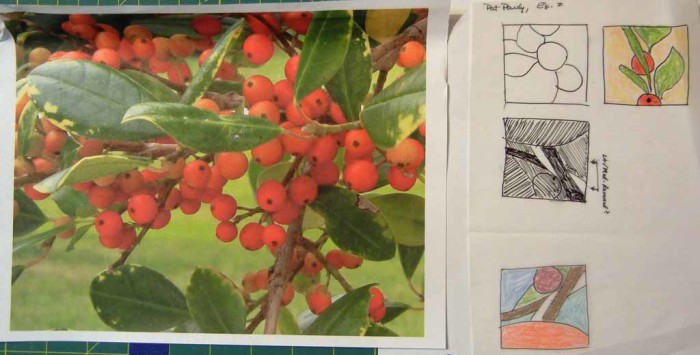
At one point she had us sewing on index cards. We were supposed to just pull scraps out of our bags and stitch them down with no thinking. My first one is on the right, and I followed the instructions exactly. But, gee it was ugly. I decided a little thinking was in order! At least I could pay attention to colors.
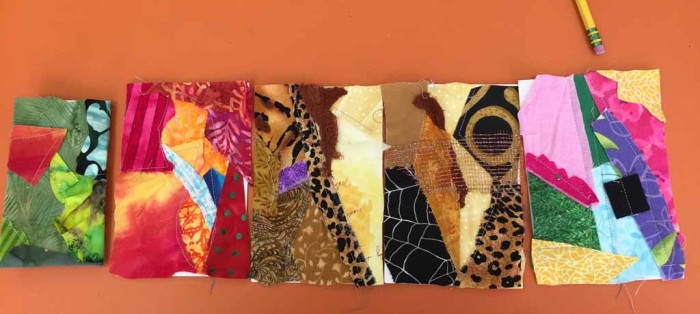
So, I made the next 4, and liked them better. Pat’s idea is that these can serve as springboards for larger compositions. And, if the fabric is patterned with a big circle, the large composition will also need a circle.
I kinda liked this next exercise. We were to select two complimentary images (from calendars we had brought,) cut them up and turn them into two coordinating pieces. The two pieces should stand alone or also look good butted up next to one another.
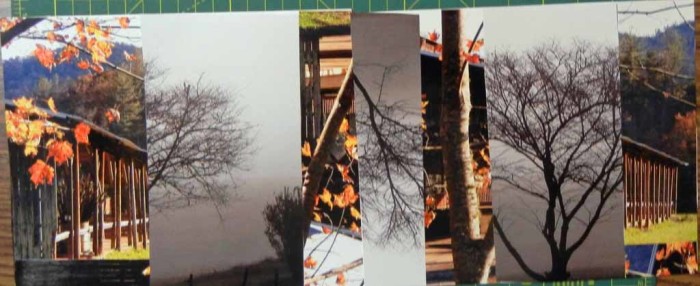
These photos were taken by Richard Jensen. I selected them because they both featured trees, but they were different in the amount of foliage, weather, and vantage point.
This combo/dyptich idea has been rattling around in my brain a little. I don’t intend to make this into a quilt, but I like the rather poetic marriage of two subjects like this.
At the end of the day, we quickly created a slightly larger collage. This time she told us we “could think a little.” This is what I came up with. I didn’t really have scraps large enough to create an effective background. But, I like the color palette. The scale is off, but with larger blue shapes (and lots of tweaking) this might turn into something decent.
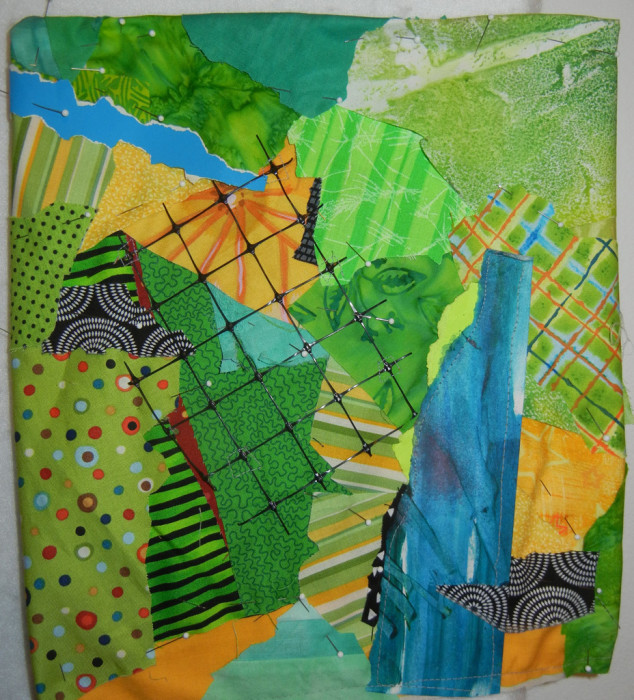
Or not. It doesn’t have to become anything! The time and thought I spent creating it enhanced both my artistic skill and my creativity. That’s time well spent! And the whole day fit that description. It was a very good class.
Have you taken any good open-ended classes like this? I’d love to hear about them.
Ellen Lindner
